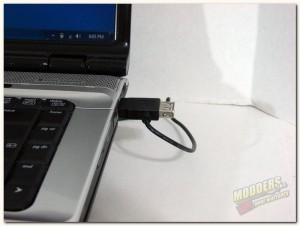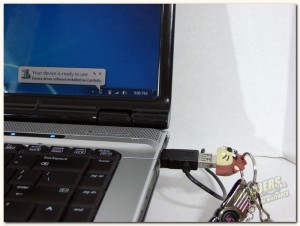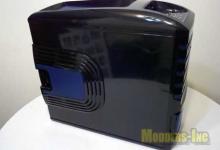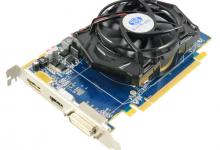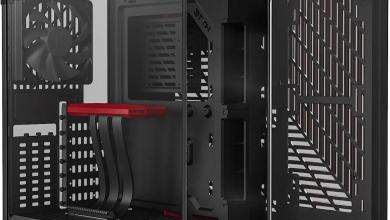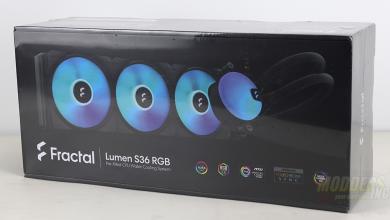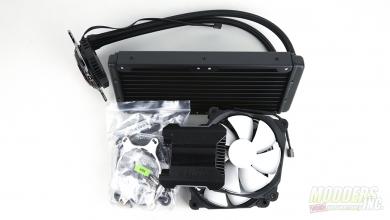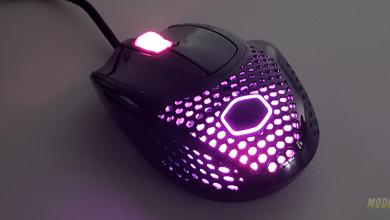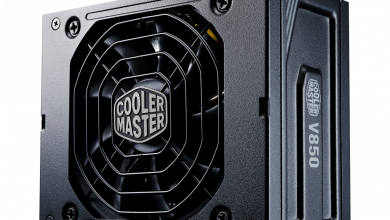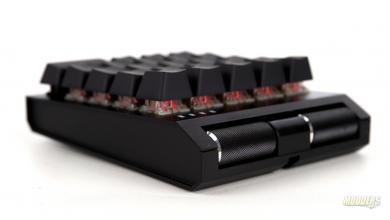Cooler Master NotePal I100 Laptop Cooler
Installation:
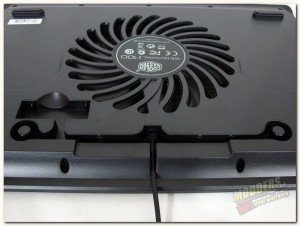
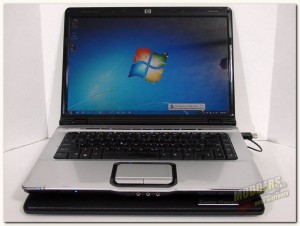 Ok, technically I suppose plugging in the USB connector would be considered an installation. So, the picture on the left form the previous page shows the correct routing of the cord once it is unwound. Simply route it down the built in cord slot and out the back of the Notepal I100 cooler and plug the USB connector into your laptop / notebook. It just doesn’t get any easier than that folks.
Ok, technically I suppose plugging in the USB connector would be considered an installation. So, the picture on the left form the previous page shows the correct routing of the cord once it is unwound. Simply route it down the built in cord slot and out the back of the Notepal I100 cooler and plug the USB connector into your laptop / notebook. It just doesn’t get any easier than that folks.
Once, you have the USB power connector plugged in the fan automatically start spinning and blowing cooler air to the bottom of your laptop / notebook. This will also allow for the cooler air to make its way into your laptop / notebook’s air intake slots.
The picture on the left shows the USB dual connector plugged into my AMD Athlon HP. You can also see that with it plugged into the single USB port on my HP, that I do not loose the use of the USB port. Instead I am able to plug my 4gb USB 2.0 thumb drive in. The HP immediately recognizes the thumb drive and I can access my files stored on the drive.
Performance:
| Idle Temp No/Cooler | Load Temp No/Cooler | Idle Temp w/NotePal I100 | Load Temp w/NotePal I100 | |
| CPU | 42°C | 63°C | 41°C | 57°C |
| HDD | 36°C | 38°C | 31°C | 34°C |
Test conditions, room temp 68° F, HP 1.8 Athlon cpu, and prime95 to load up the cpu, temps were recorded from Hardware Monitor. I did not run an extensive torture test on my HP, just a couple threads for roughly 20 minutes to get the load readings. I did however, power the laptop down long enough to get back to the normal idle temp before testing with the Cooler Master Notepal I100.
As you can see above the Cooler Master Notepal I100 did make as much as a 5°C difference in the HDD and a 6°C difference in the CPU load temps. Now, everyone’s laptops / notebooks and room temps vary, so you may not get the same results I did. However, for me it was enough to sell me on the fact that the Cooler Master Notepal I100 will indeed make a difference in the temps that most laptops / notebooks will generate.
